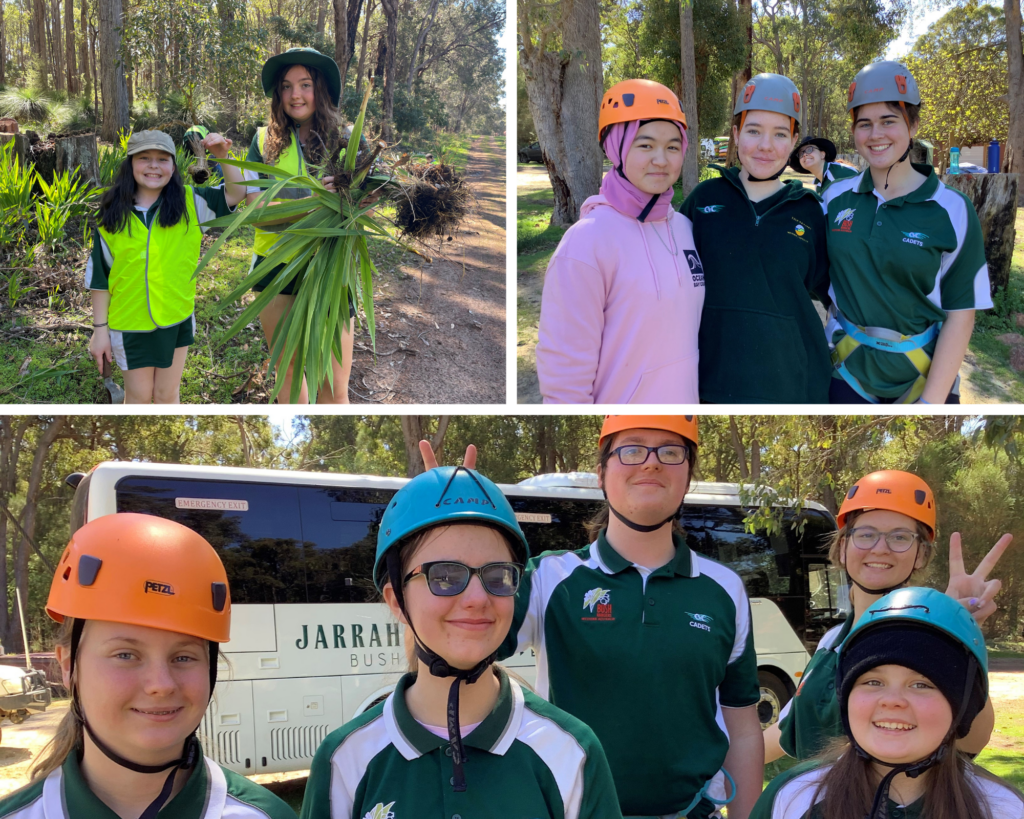
The weather was a moderate 20 degrees and sunny. We set up camp and established a fire pit with rocks and bracken collected from the surrounding bush. After lunch we played card games and chilled out. We met the instructors for a bush walk. We learnt about bush biodiversity and the species that are native to this area. We practiced using soap bush leaves and learnt about the use of the bracken fern for bites. We observed other species such as Mari, Jarrah, Banksia, grass trees, snotty gobble and Zamia palms. A few emus joined us on our walk.
We completed a bush shelter challenge. The cadets had 30 mins to build a shelter that could house all of them and keep them dry through the approaching rainstorm. We had many interesting designs built around fallen trees, sticks and dead fern fronds. The cadets showed excellent teamwork and bushcraft skills. Some shelters proved more water resistant than others, but everyone had fun and learnt valuable skills in the process.
We retired to camp, roasted marshmallows on the fire and had sausages in bread.
On our second day we woke up early and cooked bacon and eggs. Our first activity was the flying fox. Everyone had a go and there were many waves, back flips and special moves. The cadets cheered each other on and showed excellent team morale. The weather held out well and the sun shone causing excellent spirits amongst all. The second activity was team building challenges. The cadets used ingenuity and teamwork to overcome a series of small challenges. In the afternoon we collected branches for a bonfire. We took a night walk in the dark to improve our bush awareness. We listened to the sounds of the bush and heard birds, insects and frogs.
On our third day we engaged in bush ecology activities. We learnt from camp experts about the various invasive species in the bush. We worked in pairs to Identify and extract three leaf garlic grass. We observed invasive species such as Watsonia, Peach trees and Blackberry bushes.
We collected Lucin tree branches that had fallen and gathered them to feed to local goats. There was a competition to collect the most Watsonia bulbs. The team which extracted the most Watsonia brains (bulbs) got to feed the new 5-week-old baby goats.
The cadets showed excellent collaboration and bush ecology skills and learnt new skills about caring for and maintaining their local bushland. The end of Term 3 Cadet Camp was an astounding success.
Miss Gray – HASS Teacher and Cadet Teacher
